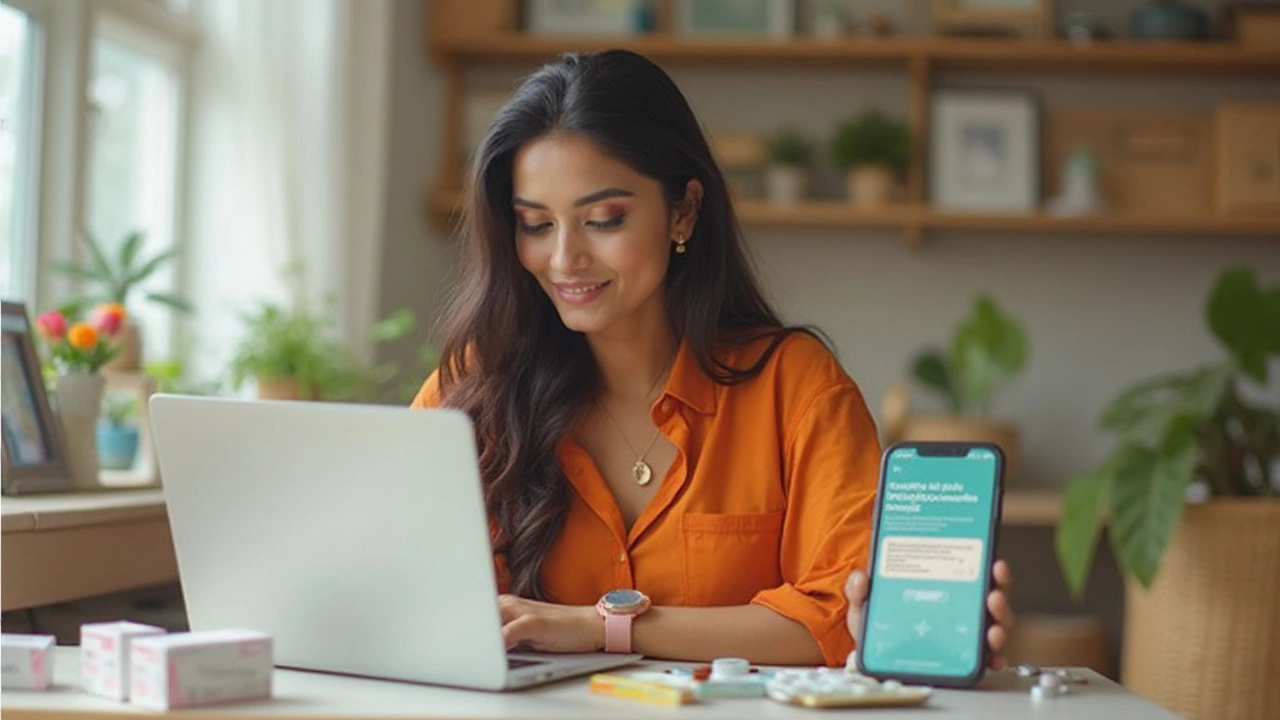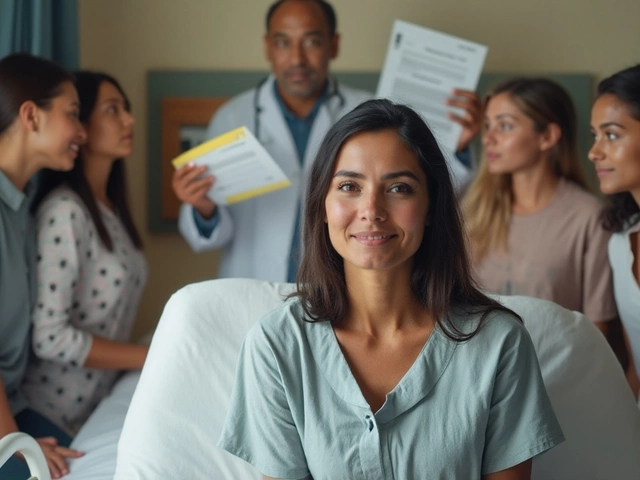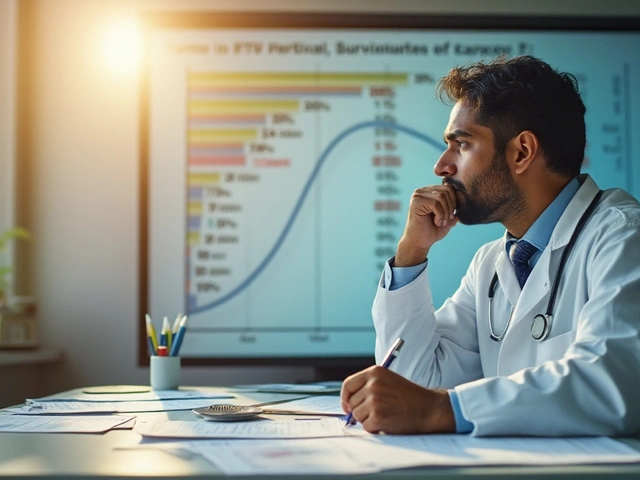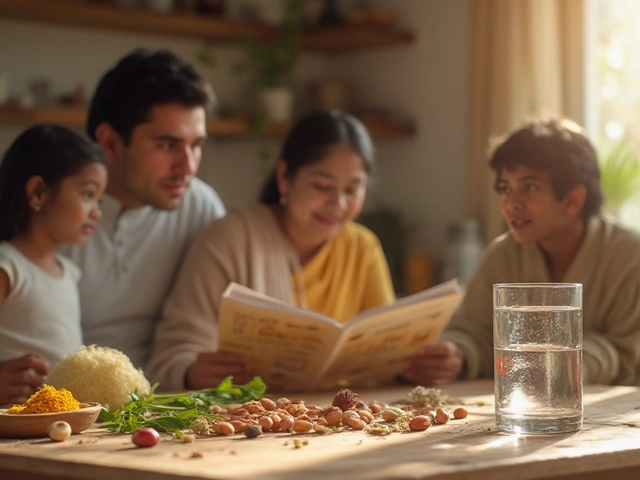Ordering prescription drugs online isn’t sci-fi anymore—it’s just a few clicks away. Sounds easy, right? But before you start typing in your credit card number, you really need to know how the whole process works and what pitfalls to watch out for. Not every website that claims to be a pharmacy is legit, and one wrong move could mean wasted money or even risking your health.
The pandemic made online pharmacies way more popular, but even now in 2025, the rules can be confusing. Some pharmacies play by the book and ask for a real prescription from a licensed doctor. Others, not so much—they’ll pretty much sell to anyone, which should be a huge red flag.
Legit online pharmacies often make things easier by letting you upload your prescription, schedule telemedicine calls, or even have your doctor send it in directly. But, always double-check if the pharmacy asks for proper info and doesn’t offer to “doctor shop” for you. Those shortcuts can get you in trouble, or worse, send you poor-quality or even dangerous meds.
- Ordering Prescription Drugs Online: How Does It Work?
- What’s Legal and What’s Not
- How to Spot a Legit Online Pharmacy
- Telemedicine: Getting Prescriptions Remotely
- Common Pitfalls and Safety Tips
- Getting Your Medication: Shipping, Payments, and Returns
Ordering Prescription Drugs Online: How Does It Work?
If you’re new to buying prescription drugs online, it’s actually a lot like shopping for anything else. You find a trustworthy site, create an account, and upload your prescription. But there are a few extra steps, and you need to be careful—after all, this is your health we’re talking about.
Here’s a quick look at how the process usually goes with a prescription drugs order:
- Find a legit online pharmacy: Start with sites that are licensed and have real contact info. Most countries have a government body or registry you can check, like the NABP in the US with its ".pharmacy" domain.
- Create an account: You’ll need to share some personal info, medical details, and sometimes set up a secure password.
- Upload your prescription: You can usually snap a photo or scan your doctor’s prescription. Some pharmacies let your doctor email or fax it directly.
- Pharmacist review: Real sites have a licensed pharmacist look over your order. They might call you with questions or confirm drug interactions.
- Payment and shipping: Choose your delivery method (standard, express, sometimes local pickup), and pay by card, insurance, or another accepted option. Good sites use secure payment pages.
Most reputable online pharmacies work with licensed pharmacists and follow strict checks, just like your local pharmacy. It’s common for legit pharmacies to call or email you if something’s not clear about your prescription, so don’t be surprised if you get a quick follow-up.
Here’s some real world data on how popular online ordering has become:
| Year | Online Pharmacy Users (U.S.) |
|---|---|
| 2020 | 17% |
| 2023 | 28% |
| 2025 (projected) | 35% |
One of the biggest reasons folks choose online ordering is convenience. With busy schedules, telehealth visits, and home delivery, it just saves time. But keep all your paperwork and digital receipts—sometimes insurance or customs may ask for verification, especially if you order from another country.
What’s Legal and What’s Not
Ordering prescription drugs online isn’t a free-for-all. There are clear laws and rules, and if you ignore them, you’re asking for trouble. In the U.S., a legit online pharmacy must be licensed in the state where it does business and will always ask for a real prescription from a licensed doctor. No prescription? That’s illegal, plain and simple.
Here's a straight-up fact: the FDA says it’s only legal to buy prescription meds online from pharmacies that are based in the U.S. and follow all federal and state laws. Crossing borders online for your meds—like buying from international sites—can land you in hot water. The drugs may be cheaper, but you risk getting fake or dangerous products. According to the National Association of Boards of Pharmacy (NABP), 95% of sites selling prescription drugs online are not compliant with U.S. pharmacy laws. That’s a massive number.
"When purchasing medications online, using a legitimate pharmacy is critical to protect your health and legal safety." — Food and Drug Administration (FDA)
Watch out for these warning signs:
- No prescription needed.
- No pharmacist available for questions.
- Prices that seem way too low.
- Website doesn’t show a physical U.S. address or valid state license number.
If you’re looking for a trustworthy site, check out the online pharmacy on the NABP’s VIPPS (Verified Internet Pharmacy Practice Sites) list. If a pharmacy is VIPPS accredited, it means it follows all the right rules. Here’s a quick look at what legal versus sketchy pharmacies look like:
| Feature | Legal Online Pharmacy | Sketchy Pharmacy |
|---|---|---|
| Requires Prescription | Yes | No |
| Licensed in U.S. | Yes | Often no |
| Pharmacist on Staff | Yes | Unlikely |
| VIPPS Accredited | Usually | No |
If you’re caught with imported or unapproved meds, you could face fines, seizure, or even criminal charges in some states. Stick to pharmacies that are transparent, ask for proper info, and never promise miracle cures. Playing by the rules keeps you safe and healthy.
How to Spot a Legit Online Pharmacy
If you’re going to order prescription drugs online, you’ll want to stick with the real deal. With so many sketchy websites out there, it pays to know the difference between a legit pharmacy and a risky one. Here’s how to tell the safe options from scams.
First thing: a real online pharmacy always asks for a valid prescription. If you hit a site that sells meds without one, run the other way. Also, legit operators display a real street address and a working phone number—not just a contact form. If you can’t reach an actual person, that’s an issue.
- Look for certification seals like the National Association of Boards of Pharmacy (NABP) Digital Pharmacy logo, or check if the site is listed on NABP’s "Find a Safe Site" database. In the UK or Australia, look for government health regulator approvals.
- Watch for websites ending in ".pharmacy"—this domain is reserved for verified pharmacies.
- Price matters. If you see deals that are way below what you’d pay locally, it’s probably too good to be true.
- Check the privacy policy. Real pharmacies protect your data, just like your local store would.
Here’s a quick breakdown showing common red flags vs. signs of a real online pharmacy:
| Legit Online Pharmacy | Sketchy Website | |
|---|---|---|
| Asks for Prescription? | Yes | No |
| License Displayed? | Yes (NABP or local authority) | No |
| Verified Contact Info? | Clear address & phone # | Hard to find |
| Crazy Low Prices? | No | Yes (often too cheap) |
Fun fact: a 2022 FDA study found nearly 96% of online pharmacies were operating illegally or selling fake medicine. So even if a site looks slick, always double-check those details. When in doubt, start with a quick NABP search, and if the deal seems shady, trust your gut.
The bottom line—safe online pharmacies work like your usual drugstore, just on your screen. Stick to places that play by the rules, and you’ll avoid the headaches.

Telemedicine: Getting Prescriptions Remotely
Telemedicine exploded in popularity during the pandemic, and honestly, it’s not going anywhere. Tons of people now get real medical advice from licensed doctors—without ever leaving their couch. Here’s how it works when you need a prescription refilled or a new one sent straight to an online pharmacy.
You usually book a video or phone call with a doctor on a telemedicine platform. They’ll ask about your symptoms, your history, and if you’re already taking any meds. For common issues—think allergies, rashes, infections, or birth control—doctors can handle everything virtually. Mental health meds? ADHD? They’re trickier, but some online clinics now handle those too, depending on your state’s laws.
If the doctor thinks you need a prescription, they’ll write one and send it to a pharmacy of your choice (either online or local). Some telemedicine sites have their own connected pharmacies, so you don’t have to mess around with paperwork. Just confirm your details, pay for your visit, and your meds are on their way.
- Tip 1: Make sure your telemedicine provider is legit. Real telemedicine sites list the doctors’ credentials and show where they’re licensed.
- Tip 2: Look for sites that have encrypted video calls and protect your information. Anything less is a privacy risk.
- Tip 3: If a site promises a prescription without any doctor review, stay away. That’s usually illegal and can be dangerous.
Most health insurance plans now cover telemedicine for routine care. Some even have $0 copays for virtual visits. But even paying out of pocket, a telemedicine visit is usually cheaper than a regular office trip—and way more convenient.
Just remember, telemedicine is great for lots of needs, but it can’t replace an in-person doctor for serious stuff or emergencies. If you’re sick and can’t wait, always head to a clinic or ER instead of trying to get meds online.
Common Pitfalls and Safety Tips
Ordering from an online pharmacy sounds super convenient, but it’s easy to trip up if you’re not careful. One of the biggest problems is fake pharmacies. Legit ones always need a real prescription. If a pharmacy skips that part or sells you something without checking who you are, you’re asking for trouble.
Counterfeit meds are a real risk. The FDA estimates that up to 97% of websites selling prescription drugs online don’t meet U.S. pharmacy standards. That’s wild, right? Meds from sketchy sites could have no active ingredient, the wrong dosage, or even be contaminated.
- Check the web address—legit pharmacies often end in .pharmacy, not .ru or .biz.
- Look for a physical address and a valid phone number in the US.
- Never trust a site that offers “miracle cures” or claims you don’t need a doctor’s visit.
Personal info is another worry. Sketchy sites could steal your medical data or payment info. Make sure the website has HTTPS and a lock icon in the address bar. Never email your credit card details—use the site’s secured payment system.
Here’s a quick breakdown of red flags and safe moves:
| Red Flag | Safe Practice |
|---|---|
| No prescription required | Pharmacy asks for a prescription from a real doc |
| Low prices that seem too good to be true | Prices close to your local pharmacy mean it’s legit |
| No US contact info | Physical address and support phone number in the US |
| Strange payment requests (wire transfer, crypto) | Credit card or established payment services |
A lot of folks just want quick access and savings, but skipping steps can hurt your wallet and health. Trust your gut—if a deal or claim feels off, it probably is. Use only certified sites that display the NABP (National Association of Boards of Pharmacy) or VIPPS seal at the bottom of the page for extra peace of mind. That seal is your sign the pharmacy has passed tough checks.
If you’re using a new site for the first time, order the smallest amount your prescription allows. This way, you test the service before making a bigger commitment. And always talk to your doctor about what you’re ordering—they might have tips or even know which sites are safe.
Remember, being careful doesn’t mean being paranoid. Online pharmacies can be a lifesaver—just keep your eyes open and follow these steps, and you’ll avoid the biggest headaches.
Getting Your Medication: Shipping, Payments, and Returns
Once you pick a legit online pharmacy, the next step is actually getting your meds to your door. Most real pharmacies let you choose standard, express, or even overnight shipping. Expect delivery times to range from two days up to two weeks, depending on where you live and whether the medicine is in stock. U.S.-based online pharmacies usually ship faster, but international ones can be slow and shipping times are way less predictable.
Tracking is standard with most licensed sites. As soon as your package ships, you should get a tracking email or SMS. If a pharmacy can’t provide tracking, that’s a bad sign. Also, some meds—like certain painkillers—can’t be shipped across state lines at all. Federal law blocks shipping of controlled substances or narcotics from overseas, so avoid any pharmacy offering to send these from outside the country.
When it comes to paying, most big-name online pharmacies accept major credit and debit cards. Some also offer PayPal or Apple Pay for extra safety. If a website asks for payment only in cryptocurrency, wire transfers, or gift cards, walk away—these are often scams or gray market operations. Always look for HTTPS in the website address before entering payment details.
- Stick with payment options that offer buyer protection, like credit cards or PayPal.
- Keep receipts and emails until you get your meds, just in case you need to dispute a charge or talk to customer service.
Sometimes stuff happens—maybe the order is wrong, or the package doesn’t show up. Reliable online pharmacies have clear return or refund policies posted on their site. Some will resend the medication, offer a full refund, or let you talk to a pharmacist about next steps. If a pharmacy says "all sales final" or dodges questions about returns, that’s a huge warning sign.
The bottom line: Getting prescription drugs online can be smooth if you pay close attention to shipping rules, use safe payment methods, and stick to websites with real customer support. If something feels off, trust your gut and double-check before you buy.

 Inspiring Stories of Stage 4 Cancer Survivors: Breaking the Odds
Inspiring Stories of Stage 4 Cancer Survivors: Breaking the Odds
 Understanding Cancer: The Types with the Lowest Survival Rates
Understanding Cancer: The Types with the Lowest Survival Rates
 Understanding the Difference Between Holistic and Homeopathic Medicine
Understanding the Difference Between Holistic and Homeopathic Medicine
 Herbs That Harm Your Kidneys: What to Avoid for Better Kidney Health
Herbs That Harm Your Kidneys: What to Avoid for Better Kidney Health
 What is the Most Treatable Mental Illness?
What is the Most Treatable Mental Illness?